Growing Vegetables in Containers for Small Vegetable Varieties
Container vegetable gardening is ideal for small spaces, balconies, urban-homesteading and roof tops. Growing vegetables in containers and pots can sometimes be more successful than conventional gardening as you can control the growing conditions more easily. You can easily move your plants from one area to another, and your soil moisture content is often better than open ground.
Another way of container vegetable gardening is to grow your plants and vegetables in wooden boxes, with a fixed grid and to plant within each grid which measures one square foot. This method is called Square Foot Gardening.
What are Suitable Containers and Pots for Container Vegetable Gardening?
You can create a container vegetable garden any type of container from the simple bucket to purpose made planters and pots. In the past I have used plastic buckets, old sinks, polystyrene boxes retrieved from the fruiterer, cut down wine barrels and window box planters.
As long as you have good soil, a sunny place, fresh seed and good drainage in your containers, you can grow vegetables in containers anywhere.
Remember though, if you are using terracotta or wooden containers for container gardening the soil will dry out quicker than if you are using plastic containers. For top heavy plants like tomatoes, peppers and eggplants, make sure that the container is heavy and weighted.
For trailing plants like snow peas think about growing vegetables in hanging baskets instead. Hanging baskets are also a novel way of growing herbs.
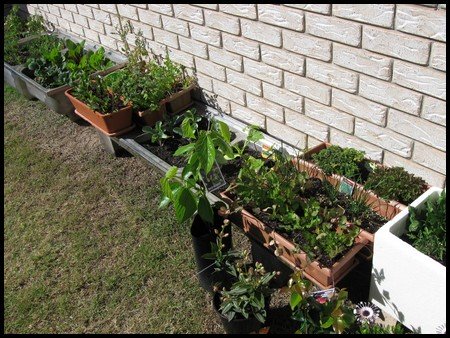
What is the Best Soil for Growing Vegetables in Containers?
Growing vegetables in containers really need to have good soil to thrive. Most potting mixes that you can purchase these days will be fine. Some even state that they have been packaged for herbs and vegetables. However, by adding a little lime to this kind of soil you will grow better lettuces, beans, and in fact most vegetables. Add 1 heaped teaspoon of either garden lime or dolomite mixed thoroughly with 10-12 liters of soil mixture.However, there are some vegetables that don't like lime added to the soil and these are rhubarb, parsley, tomatoes and potatoes.
Make your Own Container Gardening Soil:
You can make your own container gardening soil by taking 3 parts of good garden loam, 1 part of moistened peat moss, and 1 part coarse river sand. Added to this should be some well-rotted farmyard manure or compost.In addition to your organic material, you can add the following to every 8 liters of soil:
1/2 cup Epsom salts
1/4 cup coffee grounds (rinse them clean)
4 egg shells (dried and crushed to powder)
To get air into your soil and to make it lighter, add some granular polystyrene, or better still Perlite. A couple of cupfuls to your containers should be enough. Adjust according to the size of the container, but can make up 1/3 of the volume. Don't add too much as it is a water-repellent, and unless you add extra peat moss, you will find that your soil will dry out quicker than you want.
Finally I always add a good handful of blood and bone to give the vegetables a good start in their containers. I am also a fan of poultry manure more than any other for vegetables because of its high nitrogen content. Just make sure that it is not fresh, as it will burn the roots of your vegetables.Growing Vegetables in Containers and Companion Plants
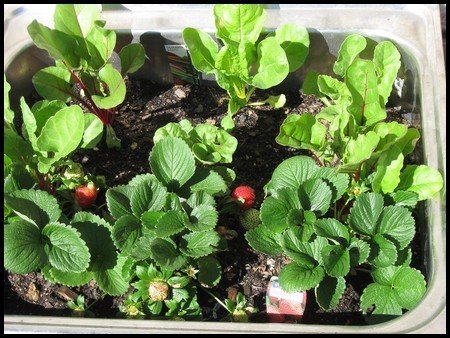
In the picture above we have beetroot and strawberries growing together. Whereas they won't help one another in any way, as true companion plants should do, they won't harm each other either. Just remember that when growing vegetables in containers that they are planted with good companions. If not, you will not have much success. See which plants are good for Companion Planting here.
Growing Vegetables in Containers and Drainage
Making sure that your containers have good drainage is essential. In wide, shallow containers make sure that the holes are well spaced around the perimeter of the base. Rectangular containers should have at least one drainage hole in each corner. If sufficient drainage is not provided your plants will become water-logged and the soil will turn sour. In the end they will come to nothing.You don't need to waste space by using broken pottery or stones at the bottom of your containers. However, to prevent the soil being washed away through the drainage holes, place a piece of metal mosquito netting or fly screen across the holes before adding the soil.
What are the Best Types of Vegetables to Plant when Growing Vegetables in Containers?
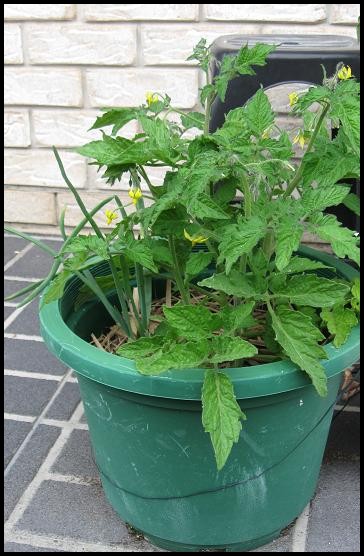 The sky is the limit really.
You can
even grow potatoes in old tires! Here you can see tomatoes being grown
in a plastic bucket. Sweet peppers can also be grown in this way, and
because they are ornamental and attractive, they can be very
successfully grown in a nice pot on your patio. Both tomatoes and
peppers will probably need to be staked.
The sky is the limit really.
You can
even grow potatoes in old tires! Here you can see tomatoes being grown
in a plastic bucket. Sweet peppers can also be grown in this way, and
because they are ornamental and attractive, they can be very
successfully grown in a nice pot on your patio. Both tomatoes and
peppers will probably need to be staked.
As long as you containers have depth you can grow carrots and parsnips in containers and other root vegetables such as beetroot, turnips, and radishes, and even garlic.
Small vegetables like cress, mustard, spring onions and most herbs of course, are ideal for growing in containers, as is fast-growing
rocket, spinach and a variety of lettuces. Leaves can be picked on an ongoing process, even before they have matured.
Vegetables that give a continuous harvest are also popular container growing vegetables. Silver beet, beetroot and rhubarb are examples of these.
Horseradish is a must when growing vegetables in containers because if you plant horseradish in the garden it will soon become so invasive you will wish that you hadn't planted it in the first place!
Planting horseradish is done in the spring. Divide the crowns into four pieces, each with some root and some of the leafy top. Allow the cuts to heal for 2 - 3 days. Set the pieces at 45 degree angles, with the tops 2 inches below the surface in your containers.
Harvest your horseradish during and throughout the winter and continue to do so until just before the tops begin growing again in the spring.
10 Best Vegetables to Grow in Containers
1. Eggplants
2. Carrots
3. Cucumbers
4. Horseradish
5. Lettuce
6. Parsnips
7. Potatoes
8. Radish
9. Tomatoes
10. Zucchini
All of the above vegetables grow well in containers. Horseradish, particularly will spread throughout any vegetable garden and therefore is better grow like this to keep it contained.
Small Vegetable Varieties for Container Vegetable Gardening
| Basil | Mini Greek, Spicy Globe |
| Beets | Little Egypt |
| Cabbages | Baby Head, Little Leaguer, Pee Wee |
| Cataloupes | Minnesota Midget |
| Carrots | Lady Finger, Little Finger, Planet, Thumberlina, Touchon |
| Corn | Golden Midget |
| Cucumber | Patio Pik, Little Minnie, Tiny Dill |
| Eggplant | Bambino, Modern Midget, Pirouette |
| Lettuce | Little Gem, Tom Thumb |
| Okra | Dwarf Long Pod |
| Peas | Dwarf Grey Sugar, Knight, Little Marvel, Mighty Midget |
| Peppers | Redskin |
| Pumpkins | Baby Boo, Baby Pan, Jack-Be-Little |
| Summer Squash | Gold Rush |
| Tomatoes | Florida Basket, Pixie, Spoon, Red Robin, Tiny Tom |
| Watermelons | Golden Midget |
| Winter Squash | Bush Butternut |
More Resources:
Go from Growing Vegetables in Containers back to Growing VegetablesGo to Growing Herbs Indoors
Go to Self-Sufficient Living
GARDENING BOOKS ON GROWING VEGETABLES IN CONTAINERS
You can Add your Own Comments and Pages on Growing Vegetables in Containers!
We have lots of pages where you can contribute to throughout this homesteading website. We love hearing from our readers, and hope you will be one of those we hear from too. Look around our homesteading website. If you have any comments, additional information or questions on growing vegetables in containers please write to us below.
Leave a Comment
Do you have anything that you would like to add after reading this page? We would love to hear your thoughts. If you can add additional information to what has been written here you will be adding value to the website! No need to have any special skills - just type and submit. We will do the rest!
Other Comments
Click below to see comments from other visitors to this page...
Thank you for the Great Site Not rated yet
Just wanted to let you know I appreciate the effort you have put into this site and sharing your knowledge with others!
So many have great information …







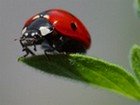
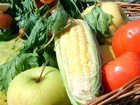


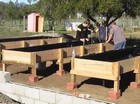
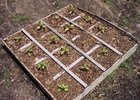

New! Comments
Do you have something of value to add? Leave me a comment in the box below.